0-8493-3405-5
Table of contents :
Industrial Heating: Principles, Techniques, Materials, Applications, and Design……Page 8
Dedication……Page 10
Contents……Page 11
Preface……Page 20
About the Author……Page 24
Abstract……Page 25
Acknowledgments……Page 27
Appendix G: Emissivity……Page 0
1.1 IN THE BEGINNING……Page 28
1.2 HEATING SYSTEM CLASSIFICATION……Page 30
1.3 CLASSIFICATION OF HEATING MODES……Page 34
1.4 AUXILLIARY TECHNIQUES……Page 37
CONTENTS……Page 39
2.2 SOURCES OF GASES IN FURNACES……Page 40
2.3 FLOW OF GASES……Page 41
2.4 IMPORTANCE OF FLUID FLOW IN HEATING……Page 43
2.5 CLASSIFICATION OF FLUID FLOW……Page 44
2.6 FLOW OVER OBJECTS……Page 47
2.7 FLOW SEPARATION……Page 48
2.8 FORCED CIRCULATION IN ENCLOSURES……Page 53
2.10 NATURAL GAS CIRCULATION INSIDE FURNACES……Page 55
2.11 BERNOULLI’S THEOREM OF FLUID FLOW……Page 58
2.12 FRICTIONAL LOSSES IN FLOW……Page 61
2.13 LOCAL LOSSES……Page 70
2.13.1 Common Local Features……Page 72
2.13.2 Gas Flow through Ports……Page 74
2.13.3 Pump Power……Page 75
2.14 STACK EFFECT……Page 77
2.15 PRACTICAL FLUE SYSTEM……Page 79
CONTENTS……Page 83
3.1 INTRODUCTION……Page 84
Single Layer Wall……Page 86
3.3 THE SHAPE FACTOR……Page 98
3.4 GRAPHICAL METHOD FOR WALL HEAT TRANSFER AND DESIGN……Page 101
3.5 CONVECTION……Page 106
Determination of Convective Heat Transfer Coefficient……Page 109
3.6 FORCED CONVECTION……Page 111
3.6.1 Boundary Layer and Convection……Page 112
3.6.2 Forced Convection over Flat Plate……Page 114
3.6.3 Forced Convection inside Tubes……Page 123
3.6.3A Laminar Flow……Page 124
3.6.3B Turbulent Flow……Page 125
3.6.4 Heat Transfer in Coils……Page 134
3.7 NATURAL CONVECTION (FLAT WALLS)……Page 139
3.7.1 Free Convection over Horizontal Pipes……Page 142
3.7.2 Free Convection inside Enclosures……Page 147
3.8 RADIATIVE HEAT TRANSFER……Page 150
3.9 RADIATION EXCHANGE BETWEEN BODIES……Page 154
3.9.1 Radiative Exchange between Two Parallel Surfaces……Page 155
3.9.2 Radiative Exchange between Article and Enclosure……Page 158
3.10 RADIATION SCREENS……Page 159
3.11 RADIATION EXCHANGE INSIDE AND OUTSIDE FURNACES……Page 163
3.12 RADIATION IN ABSORBING MEDIA……Page 166
Heat exchange between gray bodies in a closed space filled by absorbing gas……Page 170
3.13 RADIATION LOSS FROM FURNACE OPENINGS……Page 172
3.14 EXTENDED SURFACES……Page 187
CONTENTS……Page 195
4.1 INTRODUCTION……Page 196
4.2 SOLUTION BY USING CHARTS……Page 197
4.3 HEATING OF BODIES OF FINITE SIZE……Page 206
4.4.1 Instantaneous Temperature Change at Surface……Page 215
4.4.3 Surface Heating by Convection……Page 218
4.4.4 The Late Regime……Page 220
4.5 TRANSIENT CONDUCTION — FINITE DIFFERENCES METHOD……Page 225
4.6 APPLICATION OF THE FINITE DIFFERENCE METHOD TO A MULTILAYERED WALL……Page 231
4.7 CONCENTRATED HEAT SOURCES……Page 237
4.7.1 Instantaneous Point Source……Page 238
4.7.2 Continuous Sources……Page 239
4.8 TRANSIENT CONDUCTION GRAPHICAL METHOD (SCHMIDT’S METHOD)……Page 245
CONTENTS……Page 251
5.2 PROPERTIES OF FUELS……Page 252
5.3 LIQUID FUELS……Page 257
5.4 GASEOUS FUELS……Page 258
5.5 BIOGAS……Page 259
5.5.1 Single Stage Generation……Page 261
5.5.2 Two Stage Generator……Page 262
5.6 HEATING (CALORIFIC) VALUE……Page 264
5.7 CALCULATION OF CALORIFIC VALUE……Page 266
5.8 COMBUSTION AIR REQUIREMENTS AND PRODUCTS……Page 269
5.8.1 Combustion Air and Practical Requirements……Page 271
5.8.2 Preheating of Air……Page 272
5.9 SOLID WASTE AND GARBAGE……Page 273
5.10 INCOMPLETE COMBUSTION……Page 275
5.11 COMBUSTION AND POLLUTION……Page 278
CONTENTS……Page 300
6.2 COMBUSTION OF LIQUID FUELS……Page 301
6.3 CLASSIFICATION OF OIL BURNERS……Page 305
6.3.2 Low Pressure Burners……Page 306
6.4 BURNERS FOR DISTILLATE FUELS……Page 307
6.5 PREHEATING OF OILS……Page 309
6.6 KINETICS OF COMBUSTION OF GASES……Page 310
6.7 BURNING PROPERTIES OF GASES……Page 312
6.8 CLASSIFICATION OF GAS BURNERS……Page 314
6.9 FLAME STABILIZATION, IGNITION, AND DETECTION……Page 316
6.10 ATMOSPHERIC GAS BURNERS……Page 318
6.11 NOZZLE MIXING GAS BURNERS……Page 321
6.12 RADIANT TUBES……Page 323
6.13 DUAL FUEL BURNERS……Page 325
6.14 PACKAGED BURNERS……Page 327
6.15 COMBUSTION OF SOLID WASTE AND GARBAGE……Page 328
6.16.1 Burner Blocks……Page 330
6.16.3 Flame Protection Devices……Page 332
CONTENTS……Page 333
7.2 CLASSIFICATION OF REFRACTORIES……Page 334
7.2.1 Fire Clay Refractories……Page 335
7.2.2 High Alumina Refractories……Page 336
7.2.4 Carbon and Graphite Refractories……Page 337
7.2.7 Zirconia Refractories……Page 338
7.3 INSULATING REFRACTORIES AND MATERIALS……Page 339
7.4.1 Raw Materials……Page 340
7.5 REFRACTORY SHAPES……Page 343
7.6 UNSHAPED REFRACTORY PRODUCTS……Page 345
7.7 REFRACTORY FIBERS……Page 346
7.8 PROPERTIES OF REFRACTORIES……Page 347
7.8.1 Room Temperature Properties……Page 349
7.8.2 High Temperature Properties……Page 350
7.9.1 Thermal Requirements……Page 352
7.9.2 Mechanical and Chemical Requirements……Page 356
CONTENTS……Page 357
8.2 MECHANICAL PROPERTIES OF METALS AT HIGH TEMPERATURE……Page 358
8.3 OXIDATION AND CORROSION……Page 364
8.3.1 Corrosion by Other Gases……Page 367
8.4 MELTING POINT AND PHYSICAL STABILITY……Page 369
8.5 LINEAR EXPANSION……Page 370
8.6 CAST IRONS……Page 371
8.8 SELECTION OF METALS FOR HIGH TEMPERATURE APPLICATION……Page 373
CONTENTS……Page 380
9.2.1 Principles of Indirect Electric Heating……Page 381
9.2.2 Material for Heaters……Page 382
9.2.3 Special Insulating Materials in the Construction of a Heater……Page 384
9.3 CONSTRUCTION AND PLACEMENT OF HEATERS……Page 391
9.4 DESIGN OF METALLIC ELEMENTS……Page 396
9.4.1 Determination of Wire or Strip Size……Page 400
9.5.1 Silicon Carbide Heating Elements……Page 406
9.5.2 MoSi2 Heating Elements……Page 408
9.6 DESIGN CALCULATIONS FOR NONMETALLIC ELEMENTS……Page 410
9.7.1 Principle of DRH……Page 424
9.7.2 Design for DRH……Page 426
9.7.3 Advantages and Limitations of DRH……Page 428
9.8 STORED ENERGY HEATING (SEH)……Page 431
9.8.1 Principle of Stored Energy Heating……Page 432
9.8.3 Some Peculiarities of SEH……Page 434
9.9.1 Introduction……Page 437
9.9.2 Construction and Working of Electrode Furnaces……Page 438
9.9.3 Bath Salts……Page 439
9.9.5 Applications of Salt Baths……Page 442
9.9.6 Other Bath Furnaces……Page 444
CONTENTS……Page 445
10.1.1 Introduction……Page 446
10.1.3 Advantages and Disadvantages of Induction Heating……Page 447
10.1.4 Skin Effect……Page 450
10.1.5 Ferrous and Nonferrous Heating……Page 454
10.1.6 Choice of Frequency……Page 455
10.1.8 Mains Frequency Generators……Page 459
10.1.10 Motor Generators……Page 460
10.1.11 Solid State Generators……Page 462
10.1.13 Radio Frequency (RF) Power Generators……Page 464
10.1.15 Generator and Coil Matching……Page 466
10.1.16 Thermal Requirements……Page 469
10.1.17 Design of the Coil……Page 471
10.1.18 Electrical Design of Coil……Page 472
10.1.19 Equivalent Circuit Method of Coil Design……Page 475
10.1.20 Physical Design of Coils……Page 478
10.2.3 Review of Related Electric Properties……Page 488
10.2.4 Some Noteworthy Points about Dielectric Heating……Page 492
10.2.5 Applications of Dielectric Heating……Page 493
10.3.1 Nature and Generation of Microwaves……Page 494
10.3.2 Heat Generation by Microwaves……Page 495
10.3.3 Heat Produced in Microwave Heating……Page 499
10.3.4 Some Peculiarities of Microwave Heating……Page 500
CONTENTS……Page 506
11.1.1 Introduction……Page 509
11.1.2 Generation of Laser Beam……Page 510
11.1.3 Noteworthy Points about Lasers……Page 513
11.1.4 Limitations of Lasers……Page 516
11.1.5 CO2 Laser……Page 517
11.1.6 Nd-YAG Lasers……Page 520
11.1.7 Ruby Lasers……Page 522
11.1.8 Longitudinal Modes of Laser Beam……Page 523
11.1.9 Focusing Properties of Lasers……Page 525
11.1.10 Collimation……Page 528
11.1.12 Depth of Focus……Page 529
11.1.13 Transverse Modes in Lasers……Page 535
11.1.14 Temporal Characteristics of Lasers……Page 536
11.1.15 Q Switching of the Laser Beam……Page 538
Continuous Output……Page 540
11.1.16 Application of Lasers for Material Processing……Page 541
11.1.17 Laser-Material Interaction……Page 544
11.1.18 Reflectivity and Absorptivity……Page 547
11.1.19 Laser Penetration……Page 550
11.1.20 The Temperature Field……Page 552
11.2.1 Introduction……Page 554
11.2.2 Generation of Electron Beam……Page 555
11.2.3 Characteristics of EB……Page 558
11.2.4 EB — Noteworthy Points……Page 559
11.2.5 EB — Material Interaction……Page 560
11.2.6 Commercial EB Equipment……Page 562
CONTENTS……Page 563
12.1 INTRODUCTION……Page 564
12.2 UNITS FOR VACUUM……Page 565
12.3 VACUUM PUMPS……Page 566
12.3.1 Positive Displacement Pump……Page 567
Limitations and Advantages of Mechanical Pumps……Page 569
12.3.2 Roots Pump……Page 570
12.3.3 Diffusion Pumps……Page 574
Noteworthy points about diffusion pumps……Page 575
12.3.4 Molecular Pumps……Page 577
12.4.1 Selection of Vacuum Pumps……Page 578
12.4.2 Calculation of Pumping Speed……Page 582
12.5 CONDUCTANCE AND PUMPING SPEED……Page 584
12.6 BAFFLES AND TRAPS……Page 588
12.7 OUTGASSING……Page 589
12.8 VACUUM PUMPING (PRESSURE–TIME RELATIONS)……Page 594
12.9 CALCULATION OF PUMPING TIME……Page 607
12.10 MEASUREMENT OF VACUUM……Page 610
12.10.1 Mechanical Gauges……Page 611
12.10.2 Conductivity Gauges……Page 612
Cold Cathode (Penning) Gauge……Page 614
‘‘Alphatron” Ionization Gauge……Page 616
Choice and Installation of Gauges……Page 617
CONTENTS……Page 620
13.1 INTRODUCTION……Page 621
13.2 MANUFACTURED ATMOSPHERE……Page 622
13.3.2 Hydrogen……Page 623
13.4 HEATING OF PROTECTIVE ATMOSPHERE FURNACE……Page 627
13.5 DETERMINATION OF ATMOSPHERE CONSUMPTION……Page 629
13.5.1 Batch Type……Page 630
13.5.2 Continuous Type……Page 631
13.6.1 Dew Point Measurement……Page 643
13.6.2 Measurement of CO, CO2, CH4, and NH3……Page 646
13.6.3 Detection of Oxygen……Page 647
13.6.4 Selection of Analytical Instruments……Page 649
CONTENTS……Page 650
14.1 INTRODUCTION……Page 651
14.2 THERMOCOUPLE PYROMETERS……Page 653
Corollary 1……Page 654
14.3 PROPERTY REQUIREMENTS OF THERMOCOUPLE MATERIALS……Page 655
14.4 PRACTICAL THERMOCOUPLES……Page 656
14.5 COLD JUNCTION COMPENSATION……Page 660
14.7 CONSTRUCTION OF THERMOCOUPLES……Page 662
14.8 SELECTION OF THERMOCOUPLES……Page 664
14.9.1 Principle of Radiation……Page 666
14.9.2 Practical Problems……Page 668
14.10 DISAPPEARING FILAMENT PYROMETER……Page 674
14.11 RADIATION PYROMETERS……Page 676
14.11.2 Limitations……Page 680
14.12.2 Bimetallic Devices……Page 681
14.12.3 Bimetallic Energy Regulators……Page 682
14.13 TEMPERATURE INDICATORS……Page 685
14.14 TEMPERATURE CONTROLLERS……Page 687
CONTENTS……Page 691
15.1 INTRODUCTION……Page 692
15.2.1 Rotating Hearth Furnace……Page 693
15.2.2 Automatic Integral Quench Furnace……Page 695
15.2.3 Vacuum Gas Furnace……Page 698
15.2.4 Linear Continuous Furnaces……Page 701
15.3 INCINERATORS……Page 703
15.3.1 Large Scale Municipal Incinerator……Page 705
15.3.3 Domestic or Office Incinerator……Page 707
15.4 HEAT EXCHANGERS……Page 709
15.4.1 Classification of Heat Exchangers……Page 711
15.4.2 Convective Heat Transfer over Tube Banks……Page 717
15.4.3 Heat Exchanger Calculations……Page 720
15.5 DRYING OVENS……Page 728
15.6 BAKING OVENS……Page 731
15.7 FANS……Page 736
Effect of Rotational Speed (N rpm)……Page 740
15.8.2 Alumina Refractory Adhesive……Page 741
15.8.3 Cast Basalt……Page 742
Appendix A: Pressure……Page 743
Appendix B: Viscosity……Page 746
Appendix C: Thermal Diffusivity……Page 749
Appendix D: Humidity……Page 753
Appendix E: Error Function……Page 761
Appendix F: Properties of Air, Water, Gases……Page 764
Appendix G: Emissivity……Page 769
CHAPTER 2 FLUID DYNAMICS……Page 771
CHAPTER 7 REFRACTORIES……Page 772
CHAPTER 10 HIGH FREQUENCY HEATING……Page 773
CHAPTER 14 TEMPERATURE MEASUREMENT……Page 774
HANDBOOKS FOR GENERAL REFERENCE AND DATA……Page 775
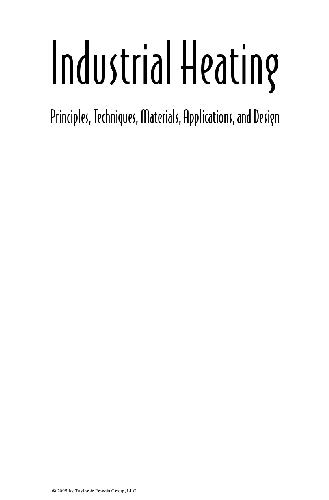
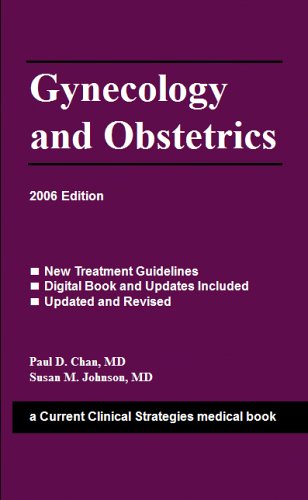
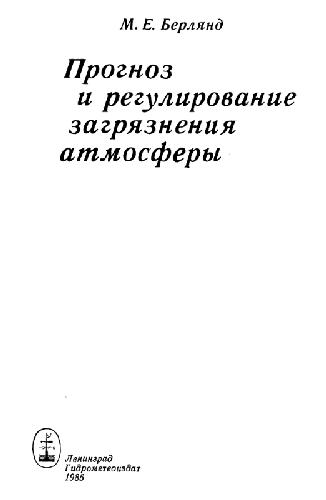


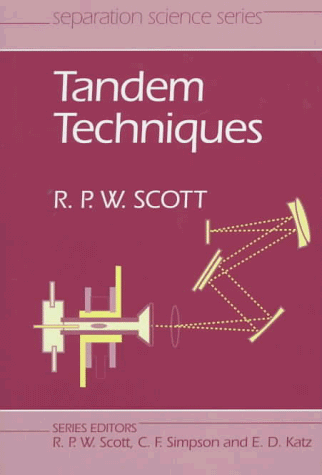
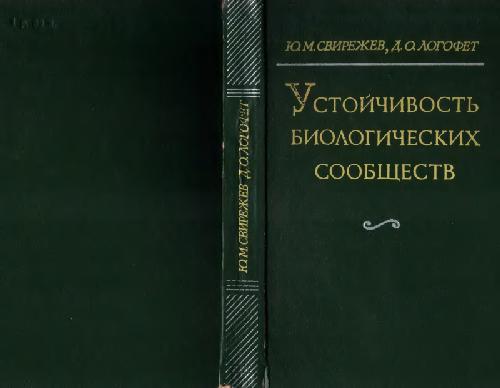
Reviews
There are no reviews yet.